Tianjin explosions: What we know so far about China disaster that killed at least 50 people
Investigators have arrived in the Chinese port city to establish a cause
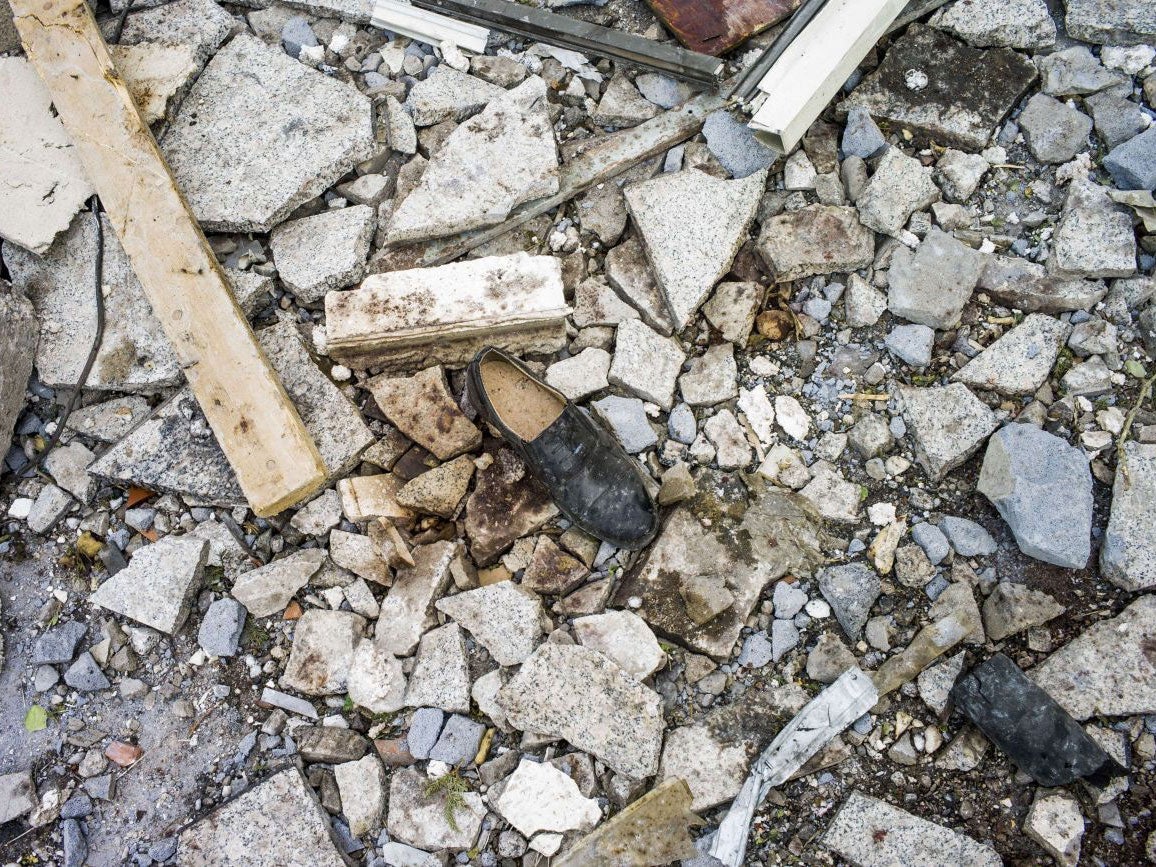
Fires started by two huge blasts at the Chinese city of Tianjin continued to burn today as hope fades for the dozens of people still missing.
Investigators have arrived at the devastated port area where an industrial warehouse exploded on Wednesday as attempts to establish a cause for the disaster continue.
Here is what we know so far:
What happened?
Firefighters had been called at the warehouse 40 minutes before the explosions started at around 11.30pm local time on Wednesday.
Warning: Footage contains strong language
Two huge blasts, including one with the force of 21 tons of TNT, came just 30 seconds apart. They were so large they could be seen from space and were registered by earthquake sensors.
Footage taken from a nearby high-rise building showed the initial explosion before the second blast blanked out the screen with white light, fading to show fireballs shooting into the air from a flaming mushroom cloud.
Shockwaves following seconds later shattered windows and sent debris swirling through the streets as people ran for cover.
The blast torched cars and reduced buildings to blackened shells, leaving behind fires that are still burning among hazardous materials.
How many people died?
At least 50 people were killed and 700 injured and the search for survivors continues.
There are 13 firefighters missing, officials said, and there are fears for the 70 victims who are being treated for critical injuries in hospital.
“Reinforcements had just arrived on the scene and were just getting to work when the explosions occurred and therefore there was no chance to escape, and that's why the casualties were so severe,” Tianjin Fire Department head Zhou Tian said at a news conference on Friday.
“We're now doing all we can to rescue the missing.”
Authorities said the death toll could have been much higher if the disaster hit a more populated area.
What was damaged?
Thousands of residents have been moved into nearby schools after their apartment buildings and homes were damaged by shockwaves from the explosions.
Meanwhile, some of the world’s largest corporations are counting the cost of damage to their stock at the port.
Toyota Motor Corp said windows were broken at its passenger vehicle assembly plant but no one was hurt, while Renault said more than 1,000 of its cars were damaged but no staff were hurt.
Mining giant BHP Billiton said its port operations and shipments were disrupted but its iron ore discharging berth had not been damaged.
John Deere & Co, the American farm and construction equipment company, said several workers in their homes at the time were injured, some critically.
One of the world’s fastest supercomputers, the Tianhe-1, also had to be temporarily shut down after the building housing it in Tianjin port was damaged.
Shockwaves generated by the blasts shattered glass windows and also caused the ceiling to collapse in parts of the National Supercomputing Centre, Xinhua news agency reported.
The Binhai New Area, where the explosions happened, is also home to the manufacturing and assembly plant of China’s super-sized space rockets.
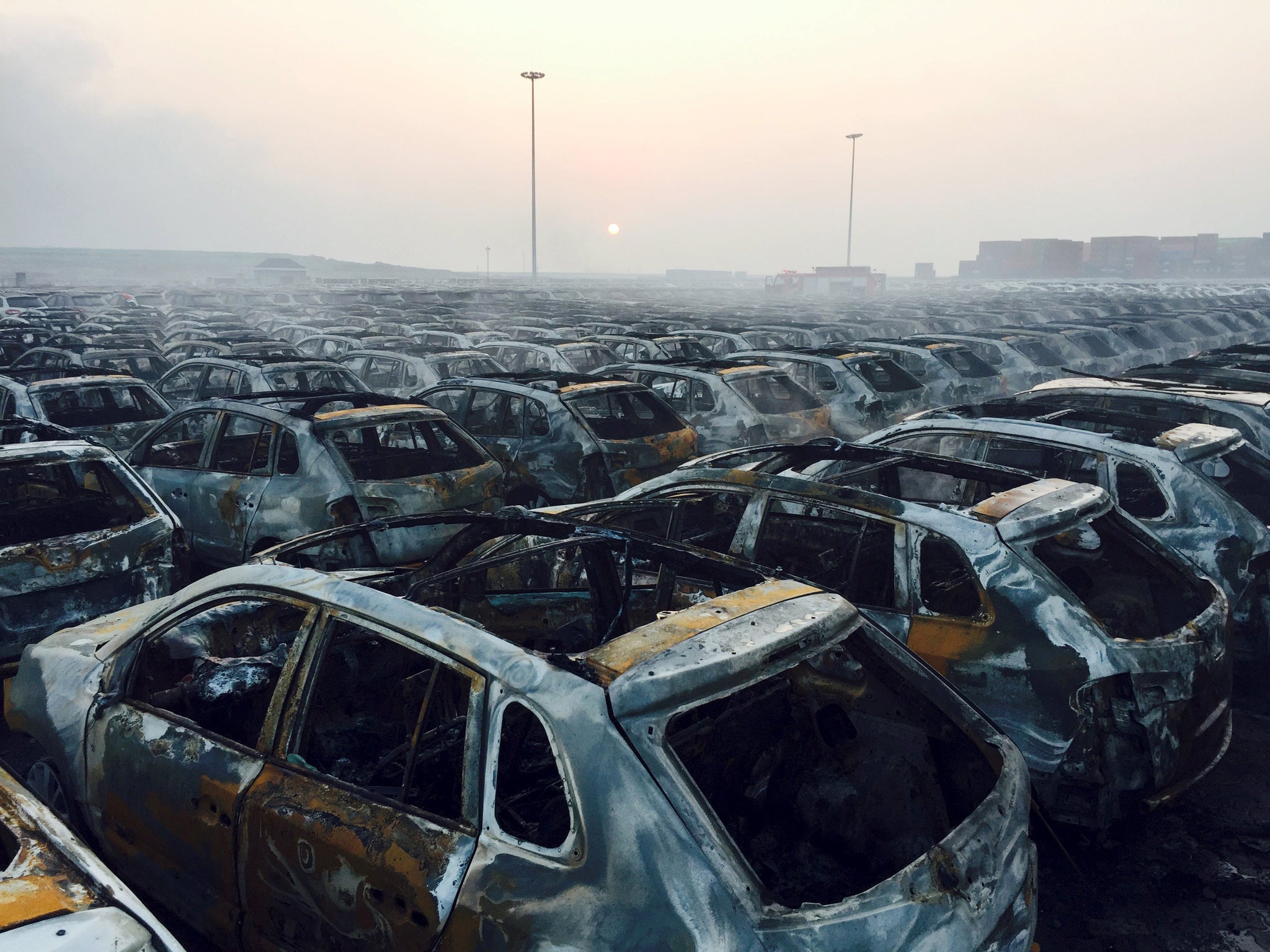
What caused it?
The cause of the disaster is still under investigation.
The shipping containers that exploded belonged to Ruihai International Logistics, a firm handling chemicals ranging from flammable gases and liquids like compressed natural gas and ethyl acetate, to toxic chemicals including sodium cyanide and toluene diisocyanate.
The warehouse where they were being held was designed to house dangerous and toxic chemicals and had been storing mainly ammonium nitrate, potassium nitrate and calcium carbide at the time of the blasts, according to police.
Gao Huiyou, deputy director of occupational safety in Tianjin, said records inside the building were destroyed in the disaster and extinguishing the continuing fire was difficult before of the complex mix of chemicals still present.
Chemical safety experts have said that calcium carbide reacts with water to create acetylene, a highly volatile gas that could explode if sprayed by firefighters’ hoses.
Stuart Prescott, a senior lecturer in chemical engineering at the University of New South Wales in Australia, said water was recommended to extinguish the two nitrates but a chemical powder was needed for calcium carbide.
“Calcium carbide reacts with the water and that's a reasonably violent reaction in and of itself, because it releases gas. The gas itself is also flammable,” he added.
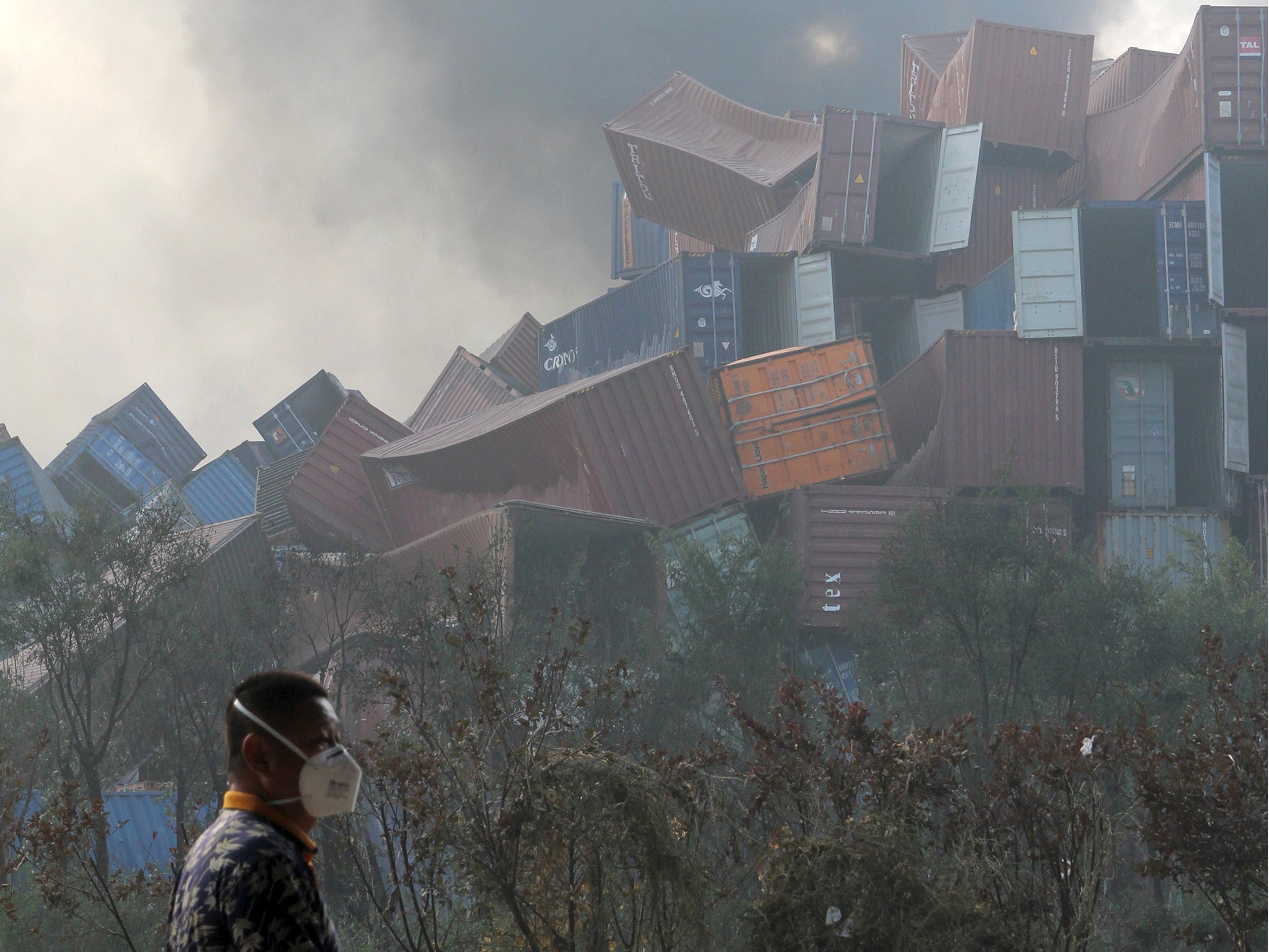
So did the emergency response cause the explosion?
At this stage there is no suggestion that firefighters are in any way to blame for the disaster.
In an interview with The Paper in Shanghai a fire official at the Ministry of Public Safety, Lei Jinde, confirmed that the first wave of firefighters used water to cool down areas on fire.
But when asked whether he knew there was calcium carbide was at the warehouse, he said yes and that firefighters would not have sprayed water on the substance.
He denied that the response could have sparked the second blast, adding: “No. The response procedure must have been scientific.”
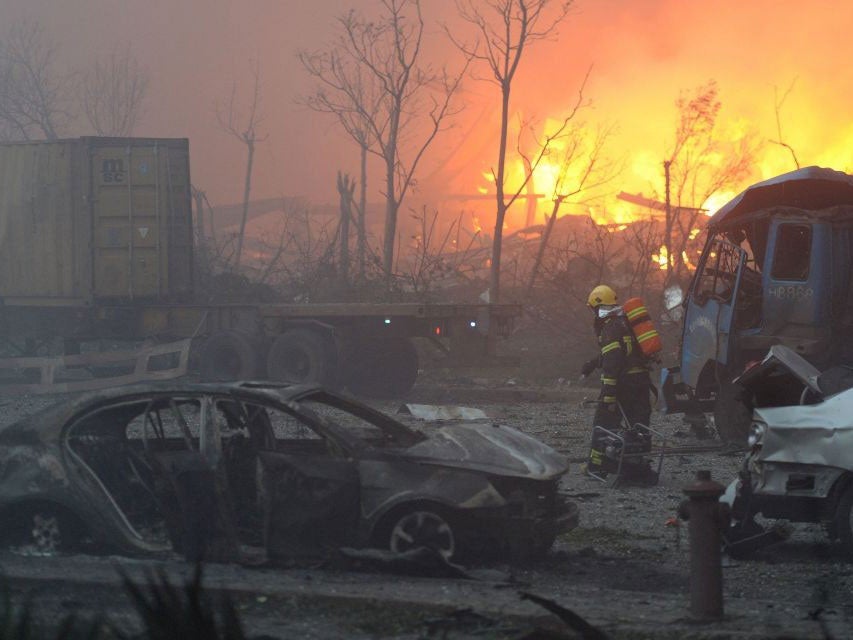
Are there other possibilities?
Concerns have also been raised in Chinese media about possible violations of packaging standards identified by safety inspectors two years ago.
The China Daily newspaper the manager of Ruihai International Logistics had been detained after Tianjin Maritime Safety Administration records showed company violated packaging standards during a safety inspection two years ago.
Of 4,325 containers that were checked, five failed the inspection because packaging was sub-standard, according to a report posted on the administration's website in January 2014.
The company's website said it was a government-approved firm specialising in handling “dangerous goods”. A representative could not be reached for a comment.
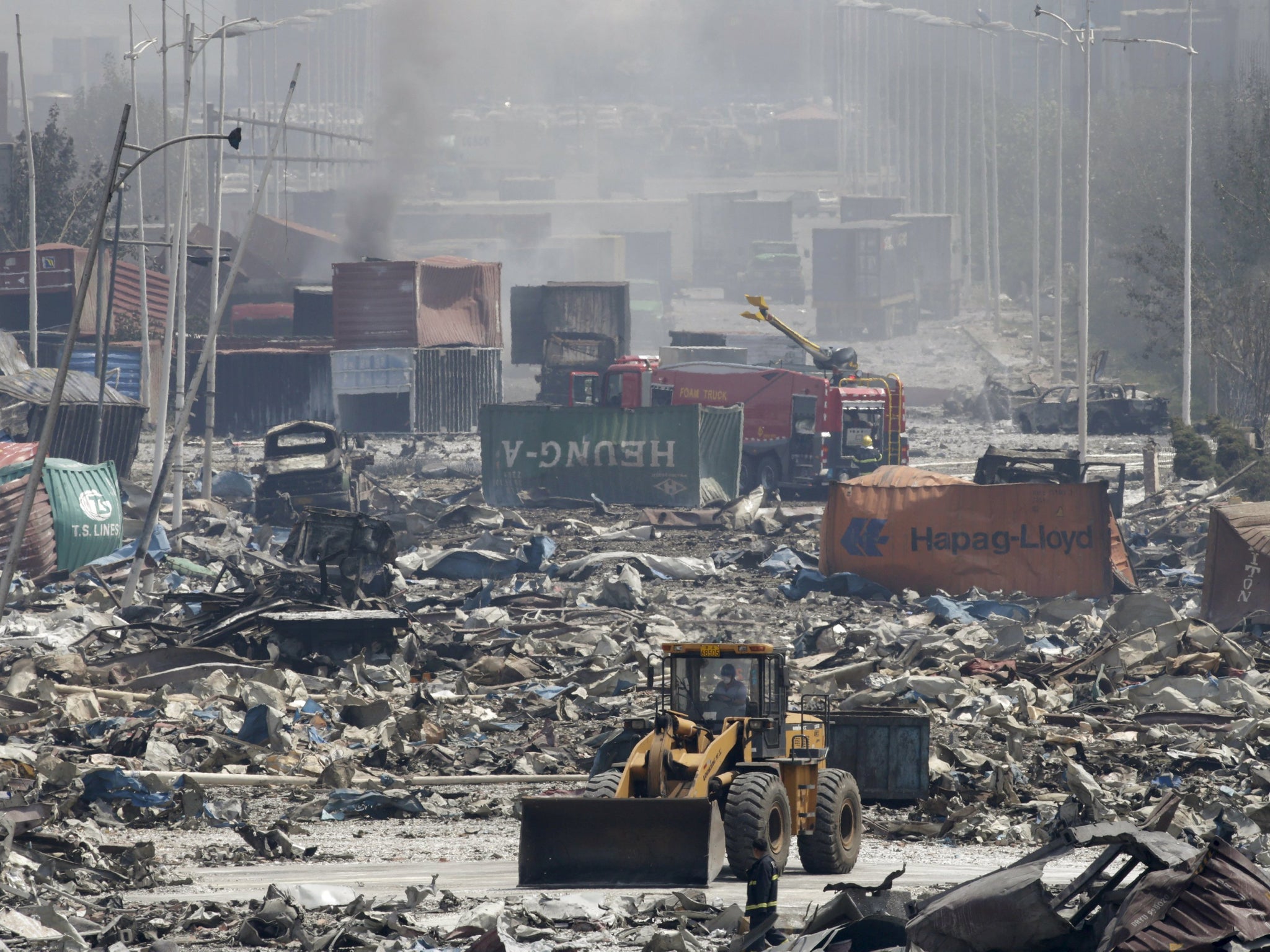
What is happening now?
A team from the International Atomic Energy Agency's Beijing environmental emergency response centre, as well as 214 Chinese military nuclear and biochemical materials specialists have travelled to Tianjin to investigate the cause of the disaster.
Wearing protective uniforms, they are also assessing environmental damage and the possible spread of toxic chemicals into the air and water.
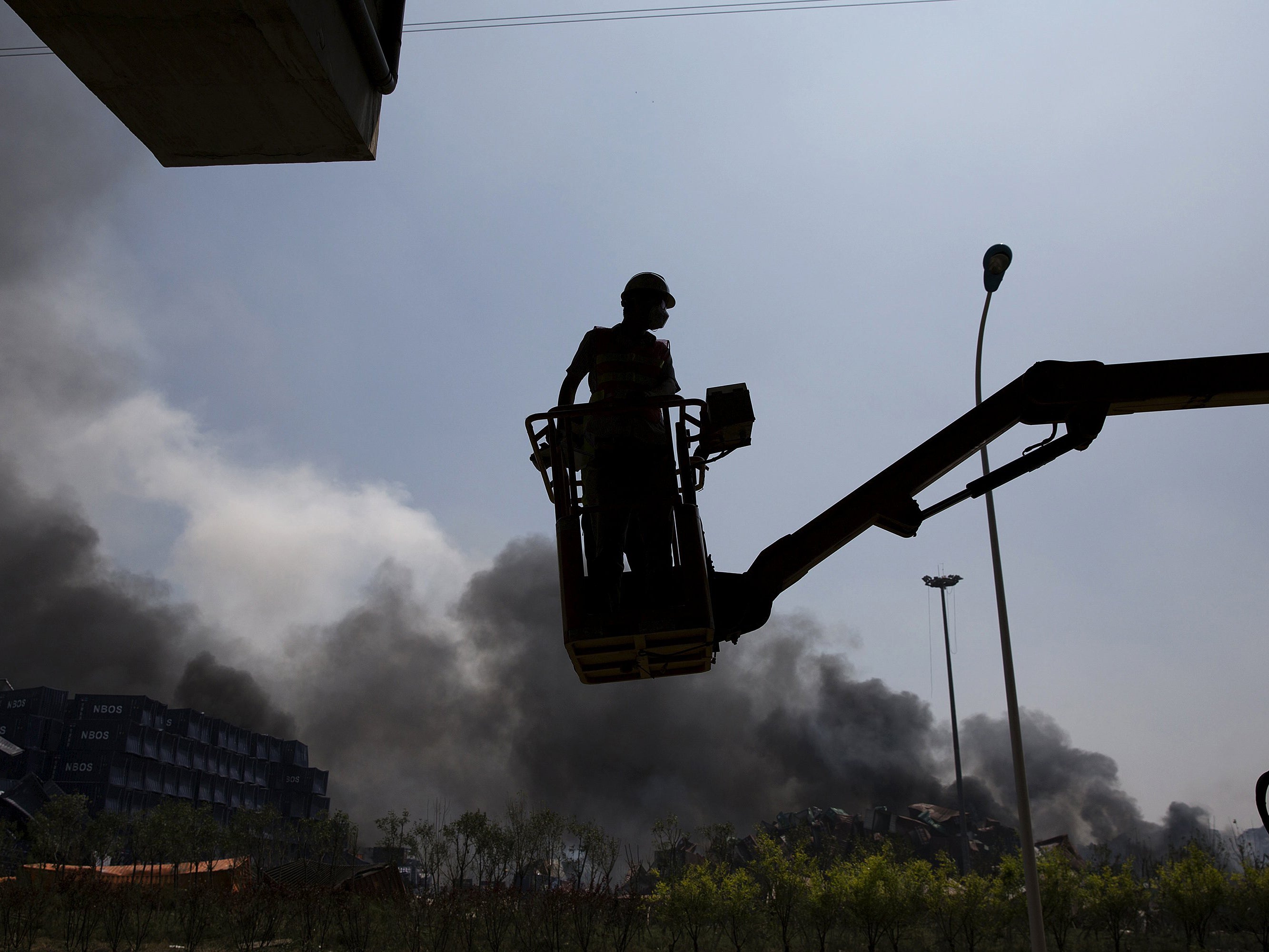
China will launch a nationwide inspection of dangerous chemicals and explosives, the government said on Friday, adding that the country must learn a “profound” lesson.
The State Council, China's cabinet, said in a statement posted to its website that it would crack down on illegal activities to strengthen industry safety.
President Xi Jinping said those responsible for the disaster should be “severely handled”.
Additional reporting by agencies
Join our commenting forum
Join thought-provoking conversations, follow other Independent readers and see their replies
Comments